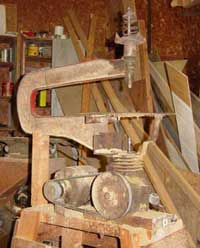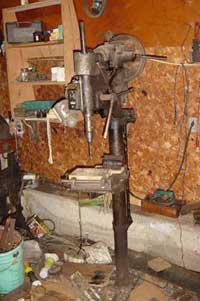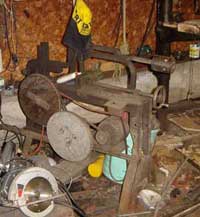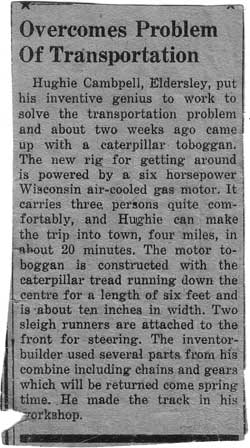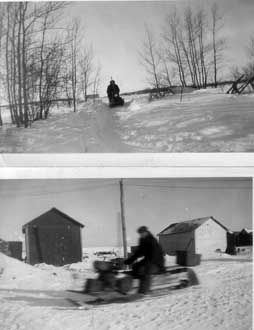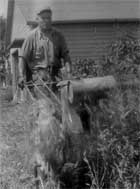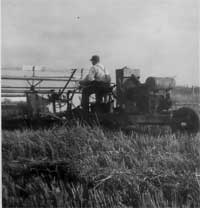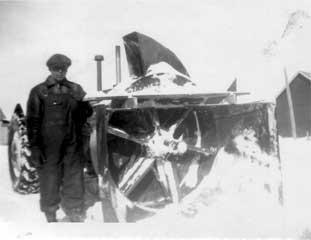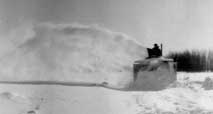
Visit To The Farm
These are some photos that I took in July, 2005 of some of the tools my father, Hugh Campbell, built. The farm yard has been vacant since his passing in 1989 when my mother moved into town. Most of the tools have been removed by my brother to his shop, however some still remain.
These tools were supplemented by a monster 500 amp Lincoln welder driven by an old combine motor that was started with a crank. He also had a South Bend metal lathe and an Oxy-Acetelene torch, so at the time it was a very impressive shop. He had three shops that I can recall, the first was a log building, it had a jack-shaft running across the back driven by a water-cooled stationary engine behind the shop. His post drill, lathe and grinder were all powered from the shaft so he had to go out and start the engine if he wanted to drill a hole, I can still feel the dirt floor vibrating when the engine started up. His second shop was an old store building he bought, and moved to the farm, he had 32 volt power by this time so no longer need the jack shaft as the tools were now powered by an electric motor that was moved from tool to tool. My brothers managed to burn it to the ground with a combination of cleaning parts with gas and using the cutting torch. The pictures above were taken in the last shop he had, a quonset style building, lots of room for metal working on one side and wood working on the other, it was never as messy as it is now, but at times it came pretty close. Up until the late 1950's the only power available was from his 32 volt bank of batteries in the basement of the house that were charged with a windcharger or light plant (gas generator). His first welder was actually a 32 volt model, he used it behind the house until he got heavy enough wire to run a line for it to the shop. It sat just below a bedroom window so when he was welding I would go into the house and watch him through the window. Fortunately my mother caught me looking out the window and put a stop to that before my eyes were ruined. He build a lot of his own farm equipment, and most of the neighbouring farmers came over to get him to do welding or lathe work, the damage was usually six bits. If he was out working the land I would do the work for them if I felt capable and make some spending money. He spent many winters in the shop, he had two kinds of projects, necessary ones and fun to do ones, often he would take a break from building a machine and turn a bowl or make a lamp. These fun things would be in the Christmas parcel, not wrapped as a gift for anyone in particular, just there for us to enjoy. Some Of His Projects Unfortunately there are no longer any photos of many of the things that he built, nor were there really any plans. Dad rolled his own cigarettes so always had a book of papers in his tobacco pouch, he also carried a short stub of a pencil and a small tape measure. When he saw something he wanted to build he would get out his tape and measure things up, marking it all down on the inside of the covers of the cigarette paper book with his stubby pencil.
During the sixty five long winters he spent on the farm he built many other tools, including a table saw, radial arm saw, wood lathe, hydraulic press and several attachments for his metal lathe. He built bulldozer blades for the tractors, earth movers, vee snowplows, grain dryers, trailers, you name it. Of all the equipment he built, I think he enjoyed building the little sand pile backhoes the most, every grandchild and kid in the neighborhood ended up with one. A conversation we had one day pretty well sums up the kind of man he was when he said, " I wish I had just a little bit of your mother's crafting talent, I envy the way she can create art from such simple things." |
